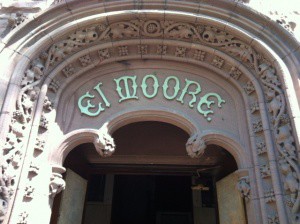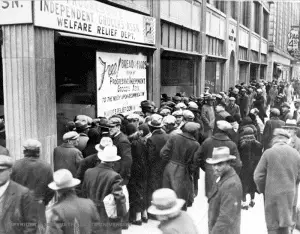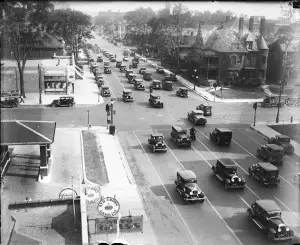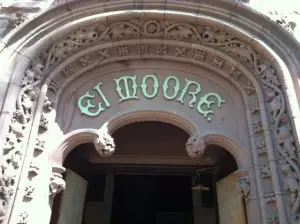
During the first decades of the 20th century, the El Moore changed from a luxury building with eight large and luxurious apartments to a building that was subdivided several times. By the mid-1920s, there were almost 30 apartments (more like single or double rooms with shared bathroom facilities) in the same space. Things went from bad to worse in October 1929 when the Great Depression hit Detroit.
Most areas of the United States were impacted by the Great Depression, but as usual, the suffering in Detroit was unusually high because so much of the economy depended on the auto industry. The population of Detroit was approximately 300,000 around 1900 when the auto industries started ramping up production; by 1914, Detroit was making one-half of the world’s cars. By 1929, Detroit was the fourth-largest city in the country with a population of 1.6 million and 160,000 people working in the auto industry.
But by 1930, auto sales declined by 75%, tens of thousands were put out of work, and banks became insolvent.

In 1930, Democrat Judge Frank Murphy was elected mayor, and he pledged that no one in Detroit would go hungry. Mayor Murphy set up the Mayor’s Unemployment Committee that provided soup kitchens and potato gardens. The present Frank J. Murphy Hall of Justice, which houses the Third Circuit Court of Michigan, was named after Mayor Murphy, who resigned in 1933 and went on to become a governor of Michigan, a governor-general of the Philippines, attorney general of the United States, and a justice on the U.S. Supreme Court, all before his death in 1949.
Meanwhile the next mayor of Detroit during the Depression was Frank Couzens, the son of Republican U.S. Senator James Couzens, who had been mayor of Detroit in the early 1920s. The M-10 freeway, now named the John C(the “C” is for “Christian”, not “Cabot”) Lodge (another former Detroit mayor) Freeway, was originally named after Mayor James Couzens; now just the service drive bears his name. Mayor Frank Couzens helped bring Detroit out of its financial crisis by paying teachers and other public employees with “script” (I.O.U.s), cutting debt, balancing the budget, and obtaining Federal relief funds to upgrade the street lights and the sewage system.

The El Moore and the surrounding Cass Corridor neighborhood somehow survived the 1930s, and the entire economy in Detroit recovered by retooling the auto plants for the WWII war effort—building tanks and missiles, and Detroit than became known as “The Arsenal of Democracy”. Many workers of the late 1930s and 1940s lived in the El Moore, which was at that time subdivided into 40 apartments or rooms for rent.

